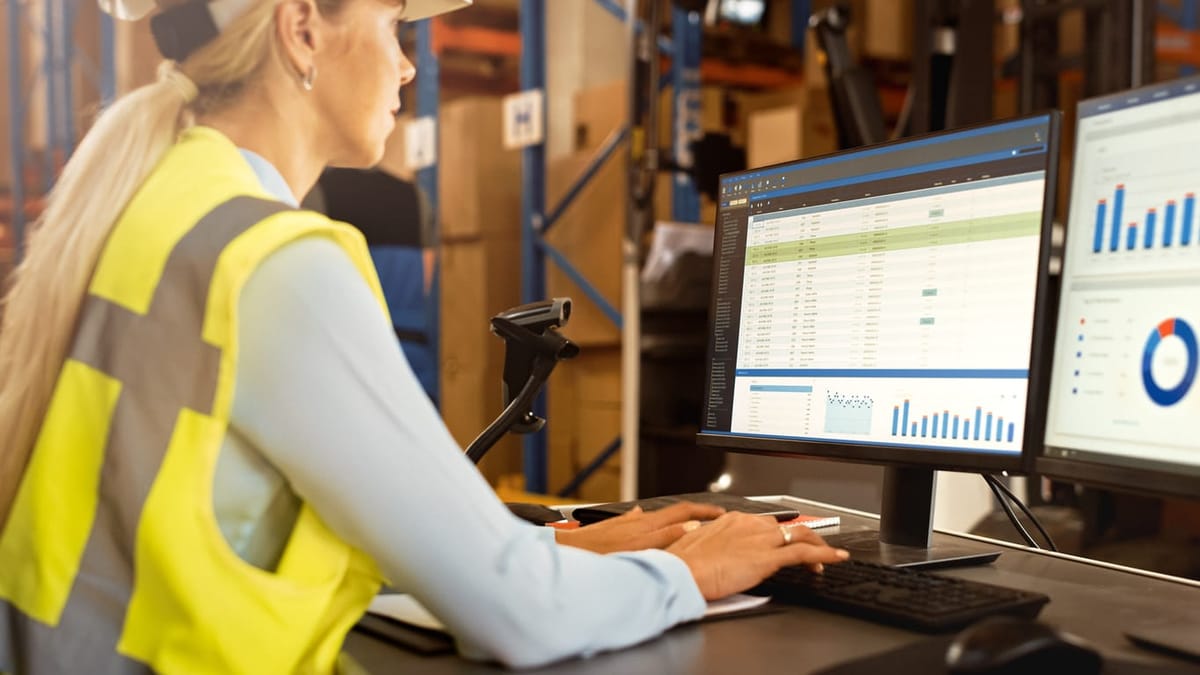Will AI Replace Your Job? How AI will Enhance Inventory Management Without Replacing Workers

Artificial intelligence (AI) has often been hyped as having the potential to automate away human jobs. With advancements in computer vision AI that can "see" and generative AI that can write and design, concerns have grown about AI making large segments of the workforce obsolete.
However, a recent working paper titled "Beyond AI Exposure: Which Tasks are Cost-Effective to Automate with Computer Vision" from IBM and MIT scientists suggests these fears may be overblown when considering the full economic picture beyond technical feasibility.
In the area of inventory management, AI shows promise to augment and enhance human abilities, providing tools to improve accuracy and efficiency without replacing inventory management jobs wholesale. Understanding the benefits as well as current limitations around AI can lead to more realistic and thoughtful integration rather than rash over-automation. Let's explore key elements around AI and inventory management jobs.
Evaluating True AI Job Replacement Potential
Previous models typically aimed to estimate the potential for AI automation looking primarily at the proportion of time spent on automatable work tasks. However, just because something is technically possible, like building a computer vision algorithm to count inventory, doesn't automatically make it the most economically viable option.
A named working paper presented a more nuanced model taking into account both dimensions:
- Technical Capacity: What level of performance would an AI system need for this task? How achievable is that with current computer vision capabilities?
- Cost-Benefit Tradeoff: What direct and indirect costs are involved in developing, deploying, and maintaining an AI system to automate this? Is it more cost-effective than human labor?
By incorporating economic feasibility, not just technical feasibility, the paper’s findings give a very different outlook on AI's potential impact on jobs in the near future:
As an example: “At today’s costs, U.S. businesses would choose not to automate many vision tasks that could be automated. Only 23% of wage payments for all vision tasks would be cost-effective to automate."
So despite time spent on vision-related tasks being technically automatable with AI, less than a quarter of that is truly ripe for automation currently after weighing the full costs involved.
Inventory Management Tasks: Enhancement Over Replacement

If wholesale replacement of inventory management jobs with AI isn't economically viable, where does that leave the possibility of using AI in inventory workflows?
When looking at core inventory tasks, AI has the potential to enhance accuracy, speed, and ease for human inventory clerks rather than replace them completely:
- Inventory Tracking: Computer vision AI can automate inventory counts, location tracking, and metadata extraction to assist cycle counts and inventory audits. However, the overall workflow still benefits from human oversight and handling exceptions.
- Demand Forecasting: Predictive AI algorithms can project future demand more accurately by analyzing years of historical data, product mixes, promotions, etc. beyond human capacity. Still, the qualitative judgment of inventory managers remains key to factor in emerging trends.
- Asset Monitoring: Connected sensor systems can transmit real-time inventory and equipment data to AI platforms. Yet, humans identify the core KPIs and benchmarks for the AI to monitor and surface alerts when anomalies arise.
- Replenishment Optimization: With holistic data on supply chains and consumer signals, AI recommender systems can optimize frequencies, transportation modes, order sizes, and more. Finally, purchasing managers provide guardrails for the AI based on supplier contracts, warehouse capacities, and budget goals.
Rather than AI aiming to operate as the inventory manager conducting all these interdependent tasks autonomously, the biggest efficiency and impact comes from AI tailored to enhance specific steps of larger inventory workflows. This appropriate scope of inventory AI projects also makes them more economically feasible compared to a wider rollout.
The VP of supply chain for a major retailer could, for example, state:
“We envision AI having the potential to streamline particular pain points, such as possibly automating certain store inventory audits to potentially assist with allocation planning. However, retaining the human resource to possibly oversee functions like store relations, merchandising initiatives and supply variances could remain mission critical.”
Inventory Management AI Adoption in Action

Looking across retail, e-commerce, manufacturing, and other inventory-driven sectors, integrating AI to augment human inventory capabilities shows the most promise and reflects real technology budget priorities. Some hypothetical examples:
Enhancing Store Audits for a Top Retailer
A leading apparel retailer could pilot AI shelf monitoring cameras and automated inventory counting in select flagship locations, with the possibility of reducing inventory slippage to some degree.
However, for a wider rollout across their numerous national locations, they might opt to equip store managers with mobile scan apps. This could enable more efficient and regular inventory spot checks, rather than attempting to fully replace manual counts across all stores.
Personalizing Demand Forecasts for an Online Grocer
An online grocery delivery platform could find that even advanced AI forecasts have the potential for 10-20% error rates due to irregular consumer demand shifts that can be unique to e-commerce perishables.
They could develop an adaptive neural forecasting model with the possibility to learn from human inventory planner feedback on unusual demand influences, such as promotions or weather anomalies. This could help continuously improve baseline projections over time.
Monitoring High-Value Medical Inventory
A hospital network could implement a sensor system to potentially track the usage and availability of expensive medical devices shared across departments via real-time dashboards.
Automated reordering and lost equipment alerts could complement rather than replace their central supply department, possibly enabling more proactive inventory control.
Each case aims for enhanced inventory visibility, efficiency, and planning rather than pursuing fully automated management separated from human roles.
Moving Towards Responsible Integration of Inventory Management AI
With AI promising to transform everything from small shops to global enterprises, responsible AI practices provide guidance on integrating emerging technologies:
- Conduct impact assessments evaluating workforce transitions alongside efficiency gains before implementing inventory AI. Proactively mitigate job losses through retraining programs where automation is unavoidable.
- Take an iterative approach rolling out inventory AI features focused on augmentation before considering full automation. Continuously measure human-AI performance as changes unfold rather than predetermining absolute automation levels.
- Keep inventory managers involved throughout AI implementation through participatory design sessions and feedback channels. Workflows integrating AI should empower rather than marginalize people’s inventory expertise.
- Review inventory KPIs to capture both technical metrics like inventory variances along with human-centered metrics like supplier relationships and customer satisfaction to prevent over-optimization by AI.
The Bottom Line
An adjusted analysis of the economics around AI automation could potentially better capture the measured pace at which enterprises adopt new technologies like AI. For inventory management, AI offers the possible potential to strengthen tasks such as accuracy, planning, and oversight.
However, the possible economics around developing and integrating these AI technologies could see AI playing a collaborative role in augmenting workflows rather than wholesale replacement of jobs for the foreseeable future.


